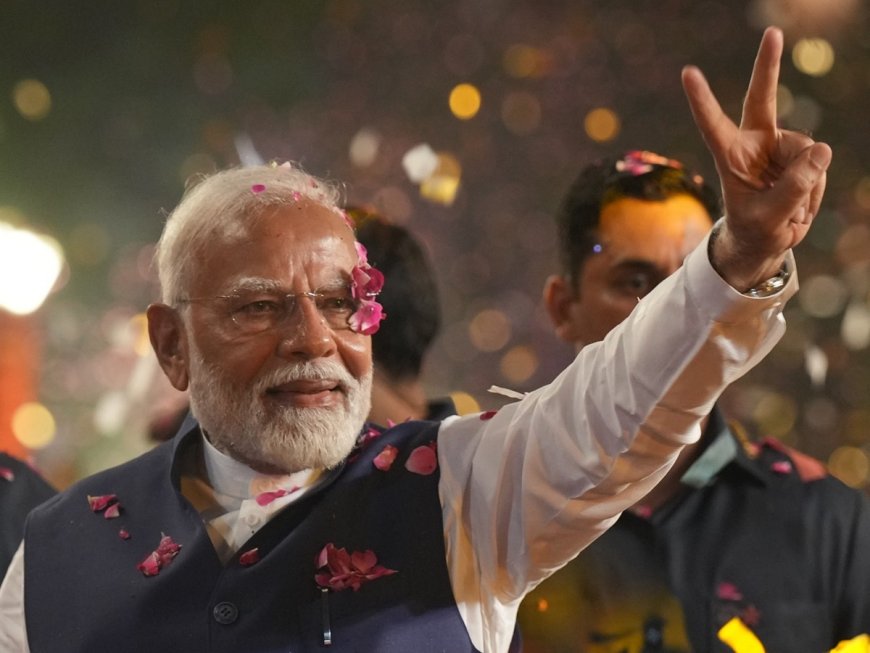From PM Modi’s Dominance to Ajay Rai’s Resurgence: Decoding The Shift in Political Tides In Varanasi
This time (in 2024) Modi's vote share came down to 54.24 percent, a drop of a little over nine percentage points from last time.

New Delhi: Narendra Damodardar Modi emerged victorious from the Varanasi Lok Sabha constituency of Uttar Pradesh for a third consecutive term. As per the results announced by the Election Commission, PM Modi triumphed over Congress candidate Ajay Rai by a margin of 1,52,513 votes in the Lok Sabha Elections 2024. The ECI announced the results on 4 June, revealing that Modi, representing the Bharatiya Janata Party (BJP), garnered 6,12,970 votes, commanding a vote share of 54.24 percent.
However, it is important to note that Modi’s victory margin experienced a decline compared to the previous elections. In 2019, he amassed 6,74,664 votes and defeated Samajwadi Party’s Shalini Yadav by a substantial margin of 4,79,505 votes. Similarly, in his initial contest in 2014, Modi’s victory over Aam Aadmi Party (AAP) candidate Arvind Kejriwal was marked by a margin of 3,71,784 votes.
Despite the drop in Margin, Modi’s continued dominance in Varanasi underscores his enduring appeal among voters in the region, signaling a significant mandate for his leadership.
Here are some of the key factors:
- Narendra Modi, who was the chief minister of Gujarat in 2014, was aiming for the top post as BJP’s prime ministerial candidate back then.
- He chose to contest from two seats — Vadodara in Gujarat, and Varanasi in Uttar Pradesh.
- In 2014, when Modi contested from the seat for the first time, Aam Aadmi Party Chief Arvind Kejriwal fought against him and polled over 2 Lakh votes (20.30 percent) to emerge as the number two candidate.
- On number three was Congress’ Ajay Rai who polled 75,614 votes (7.34 percent) votes.
- In the 2019 election, Narendra Modi secured 6,74,664 votes.
- Modi’s vote share increased to 63.62 percent from 56.37 percent in 2014, marking a rise of 7.25 percentage points.
- The Aam Aadmi Party (AAP) did not participate in the election from this constituency.
- The Samajwadi Party (SP) and Bahujan Samaj Party (BSP) formed an alliance and contested.
- SP candidate Shalini Yadav received 1,95,159 votes, which accounted for 18.40 percent of the total votes.
- Congress’ Ajay Rai retained the third position with 1,52,548 votes, constituting 14.38 percent of the total votes.
- This time (in 2024) Modi’s vote share came down to 54.24 percent, a drop of a little over nine percentage points from last time.
Why PM Modi Choose Varanasi:
Varanasi’s strategic location was envisioned to empower Modi with significant influence across both Uttar Pradesh and Bihar. These two states collectively contribute 120 Members of Parliament. Securing just half of these seats can profoundly bolster the prospects of any national party in forming the central government.
The second reason is Varanasi’s position the larger cultural context.
Kashi, which is associated with the Hindu god Shiva, and is home to the dispute over the Gyanvapi mosque.
A temple-mosque dispute similar to those in Ayodhya and Mathura, the Gyanvapi issue was in cold storage for decades till it was resuscitated in 2019 after the Supreme Court verdict in the Ayodhya Ram Janmabhoomi case.
What's Your Reaction?



























































